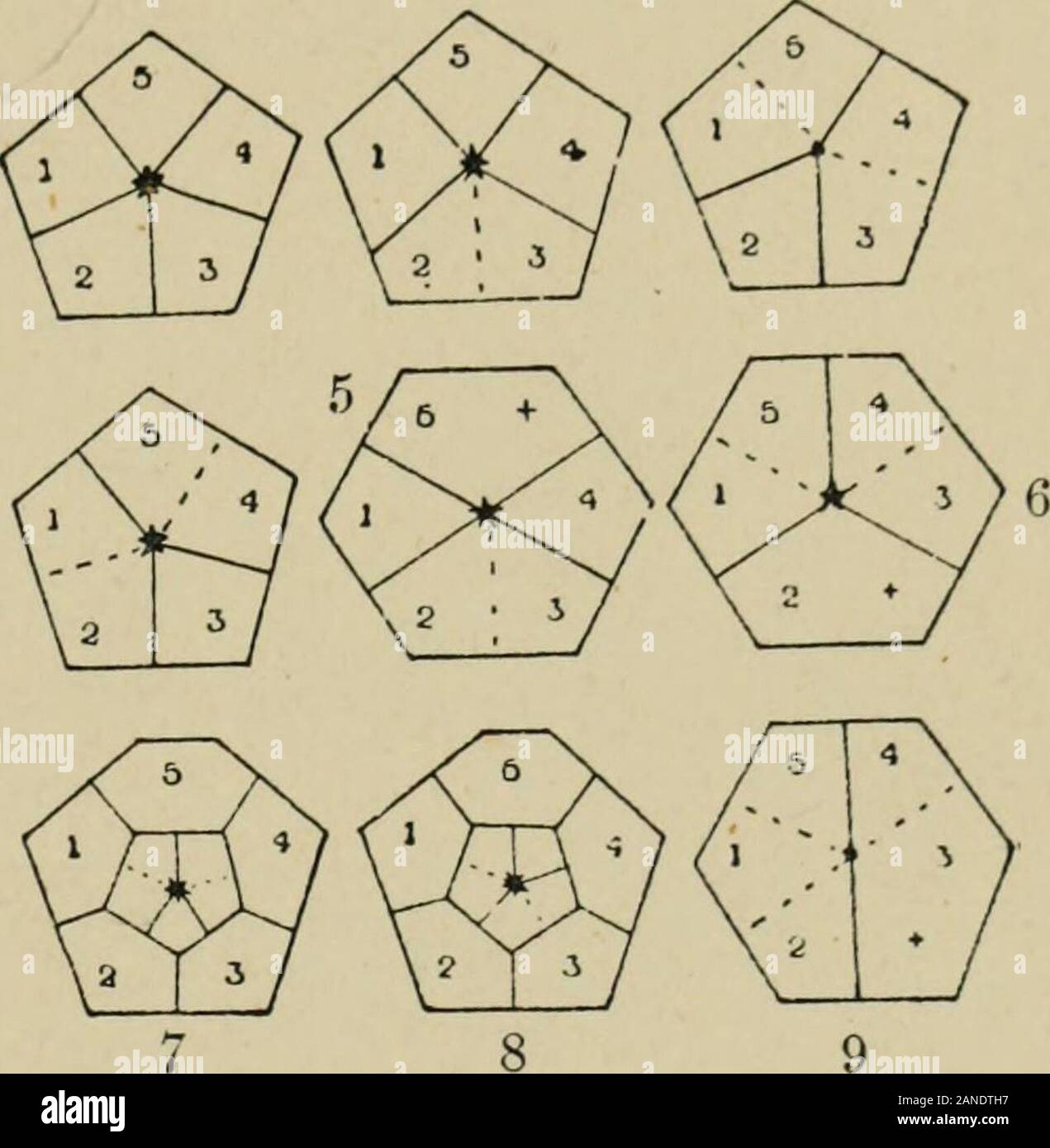A treatise on zoology . d anterior large plate, and two small lateral plates (Fig.XXXI. 5). These tend to approximate in size. In Xenocrinus(Fig. LXXVIIL), interbrachials as well as anals come down betweenthe radials, so that the basals are nearly equal in size, but irregularin shape, and make the base decagonal. Removal of anals andinterbrachials from the radial circlet leaves a pentagonal quadri-partite base, such as is found in Melocrinidae (p. 161). An analresting on a tripartite base is accompanied by increased width inthe small left anterior basal (Fig. XXXI. 6). But in the bipartitebase

Image details
Contributor:
The Reading Room / Alamy Stock PhotoImage ID:
2ANDTH7File size:
7.1 MB (197.5 KB Compressed download)Releases:
Model - no | Property - noDo I need a release?Dimensions:
1563 x 1598 px | 26.5 x 27.1 cm | 10.4 x 10.7 inches | 150dpiMore information:
This image is a public domain image, which means either that copyright has expired in the image or the copyright holder has waived their copyright. Alamy charges you a fee for access to the high resolution copy of the image.
This image could have imperfections as it’s either historical or reportage.
A treatise on zoology . d anterior large plate, and two small lateral plates (Fig.XXXI. 5). These tend to approximate in size. In Xenocrinus(Fig. LXXVIIL), interbrachials as well as anals come down betweenthe radials, so that the basals are nearly equal in size, but irregularin shape, and make the base decagonal. Removal of anals andinterbrachials from the radial circlet leaves a pentagonal quadri-partite base, such as is found in Melocrinidae (p. 161). An analresting on a tripartite base is accompanied by increased width inthe small left anterior basal (Fig. XXXI. 6). But in the bipartitebase the small basal fuses with the combined posterior and leftposterior basals, while the combined right-hand basals increase inwidth (Fig. XXXI. 9). In most Dicyclica the infrabasals do notassume a hexagonal outline; for the aiials do not occur in thebasal circlet, but x truncates the upper surface of the posteriorbasal. Exceptions are Sagenocrinus, Carahocrinus (Fig. LXXXIY.), StrophocrinuM, and Thenarocrimis (Fig. XCVL).. 124 THE CRINOIDEA The enlargement of anal structures was not the only factor inthe modification of the typical pentamerism. Allusion need notbe made to the (apparently sudden) dropping of a radius toform Tetracrinns (p. 153), or the duplication of the radii to formPromachocrinus (p. 195), and similar cases. Nor need more besaid as to the enlargement of certain radii (e.g. Fuocrimis), thebisection of others (e.g. Heferocrinus), and so forth, since in thesecases the outwardly symmetrical appearance of the cup usuallyremained unaltered. But certain factors, probably of physicalenvironment, such as currents and direction of food-supply, orpossibly connected with locomotion, have at different times pro-duced similar results in different families. A bending over of thecup, accompanied by diminution of certain radials, was commonin Eugeniacrinidae, as well shown by Jaekel (1891). In theremarkable Calceocrinidae the crown was bent towards the rightposterior interradius